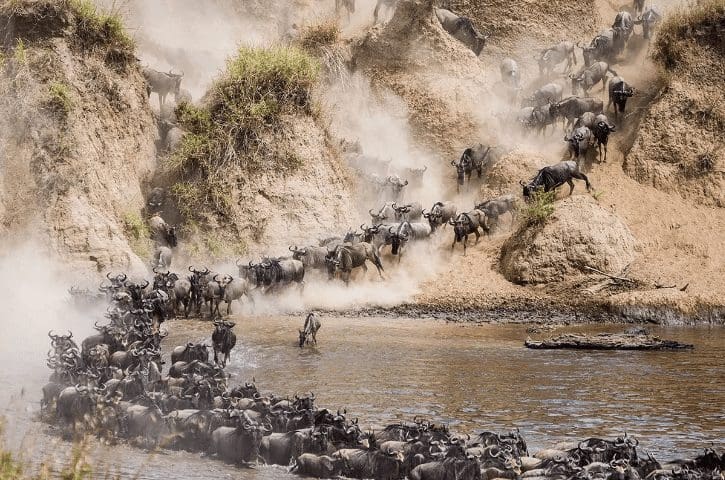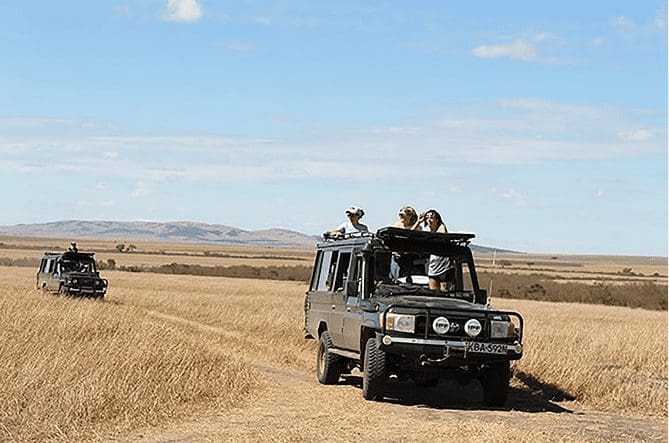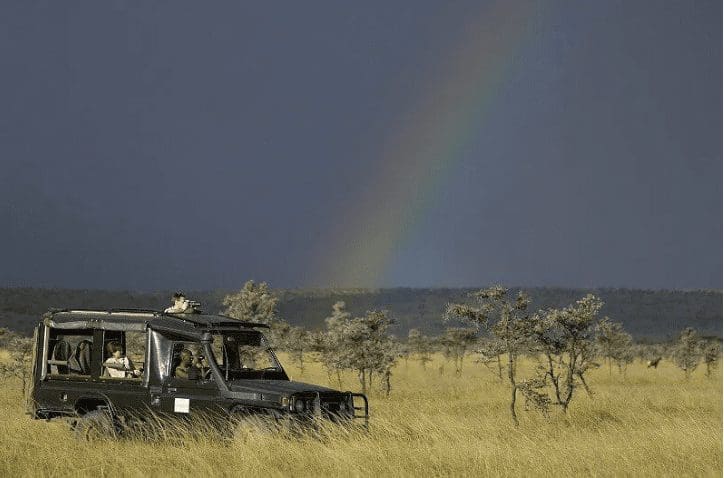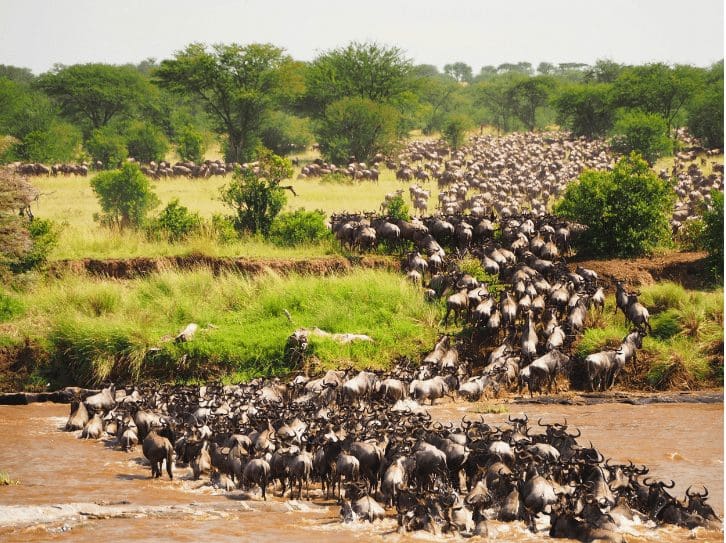The Masai Mara is one of Africa’s most iconic safari destinations, renowned for its stunning landscapes and incredible wildlife. As part of the larger Serengeti ecosystem, it’s home to the Big Five and offers some of the best wildlife viewing in the world, particularly during the annual Great Migration. Timing your visit is crucial to maximizing your safari experience, as different seasons offer varying opportunities for wildlife encounters, scenery, and cultural experiences.
Whether you want to witness the Great Migration, see predators in action, or enjoy a more peaceful safari, understanding the best time to visit Masai Mara will ensure that your adventure is perfectly tailored to your preferences.
The Seasons in Masai Mara
The Masai Mara experiences two main seasons—dry and wet—which greatly influence wildlife behavior and the overall safari experience. Understanding these weather patterns will help you decide when to plan your visit for the best possible sightings.
Climate Overview
The Masai Mara enjoys a mild climate due to its high elevation, with temperatures typically ranging from 20°C (68°F) to 30°C (86°F) during the day and cooling down in the evenings. However, rainfall and weather patterns significantly impact the wildlife and scenery.
Dry Season (June to October)
The dry season is the most popular time for safaris, as it coincides with the Great Migration and prime wildlife viewing. During these months, the grass is shorter, making it easier to spot animals as they gather around remaining water sources. The Great Migration reaches its peak between July and October, offering dramatic scenes of river crossings at the Mara River. With clear skies and excellent visibility, this is the best time for photography and game drives.
Wet Season (March to May; November to December)
The wet season consists of two parts: the long rains from March to May and the short rains in November and December. While the rains bring lush green landscapes and fewer tourists, they can make travel more challenging due to muddy roads. Wildlife tends to disperse, as water sources become more abundant, making animals harder to track. However, this season is ideal for birdwatching, as migratory birds arrive, and the Mara becomes a vibrant paradise for photography enthusiasts.
Each season in the Masai Mara offers its unique benefits, and knowing how they influence wildlife will help you plan the perfect safari.
The Best Time to Visit: July to October
The best time to visit the Masai Mara is from July to October, which marks the peak of the Great Migration and the dry season. During this period, you’ll witness millions of wildebeests and zebras moving across the plains, creating unforgettable wildlife spectacles.
Peak Season for the Great Migration

From July to October, the Masai Mara becomes the stage for the Great Migration, where massive herds of wildebeests and zebras journey from the Serengeti into the Mara. This incredible event draws predators like lions, cheetahs, and crocodiles, making it the most action-packed time for game drives. If you’re after thrilling wildlife encounters, this is the time for you.
The Importance of River Crossings
One of the most iconic sights of the Great Migration happens at the Mara River. Between July and October, you can witness the dramatic river crossings, where thousands of animals risk their lives against strong currents and crocodile-infested waters. Watching these crossings is a once-in-a-lifetime experience, and it’s something you won’t want to miss.
Advantages of Visiting During the Dry Season
The dry season makes it easier for you to spot wildlife, as the vegetation is sparse and animals gather around limited water sources. You’ll enjoy clearer views of the wildlife, with big cats and other predators more visible in the open plains. The dry season also provides perfect weather for photography, with bright skies and excellent lighting throughout the day.
Expect More Tourists, But an Unforgettable Experience
While the July to October window is the busiest time in the Masai Mara, the incredible wildlife sightings make it worth the crowd. You’ll share this unforgettable experience with fellow travelers, but the sheer magnitude of the migration and the awe-inspiring landscapes will make it a once-in-a-lifetime adventure.
If you want to witness the Great Migration in all its glory, plan your trip during these peak months for a truly unforgettable safari.
Shoulder Seasons: December to February

The shoulder season from December to February is a quieter yet rewarding time for your Masai Mara safari. Although the Great Migration has ended, the wildlife remains abundant, and you’ll enjoy a more relaxed experience with fewer tourists.
A Quieter Time for Safaris
This period sees fewer visitors, giving you a more intimate safari experience. The reserve is less crowded, allowing you to enjoy undisturbed wildlife sightings and game drives at your own pace. It’s also easier to find prime viewing spots without the peak-season rush.
Benefits of Visiting After the Migration
One of the major benefits of visiting during this time is the more affordable accommodations. Many lodges offer lower rates during the shoulder season, making it a great option for those seeking a budget-friendly safari without compromising on quality. Additionally, you’ll have more flexibility in choosing your accommodation and game drive schedules.
Opportunities for Predator Activity
Even after the migration, the Masai Mara remains home to a high concentration of predators. With prey still abundant, this is an excellent time to witness big cats like lions, leopards, and cheetahs on the hunt. The dry grasslands make it easier to spot them, especially during early morning and late afternoon game drives.
Birdwatching
For bird enthusiasts, December to February is a prime time for birdwatching, as migratory species arrive in the Masai Mara. You’ll be treated to vibrant sightings of birds like storks, eagles, and flamingos, adding another layer of beauty to your safari.
Visiting during the shoulder season offers you the chance to enjoy excellent wildlife sightings, exciting predator activity, and beautiful birdwatching, all while avoiding the crowds and enjoying more affordable options.
Avoiding the Rainy Season: March to May

The rainy season in the Masai Mara occurs from March to May and is characterized by heavy downpours that affect travel conditions and wildlife viewing. While the landscape becomes lush and green, the rains make it more challenging to navigate the park.
Impact on Travel Conditions and Wildlife Viewing
During the rainy season, the roads in the Masai Mara can become extremely muddy and difficult to traverse. This may lead to delays or restricted access to certain areas, limiting the range of wildlife sightings. While the lush landscape is beautiful, it can also make it harder to spot animals, as they are more dispersed with water readily available throughout the reserve. However, the scenery is stunning, and photographers may appreciate the vivid greens and dramatic skies.
Lodges and Camps During the Rainy Season
Many lodges and camps either close or operate at reduced capacity during this period due to low demand and the challenging conditions. The heavy rains can disrupt outdoor activities like bush walks and balloon safaris, and some roads may become impassable, further limiting your safari experience.
Risks of Muddy Roads and Travel Difficulties
Travel within the reserve can be difficult, as the rains make roads slippery and vehicles more prone to getting stuck. Getting around the park often requires 4×4 vehicles with experienced drivers, and even then, reaching certain areas may be impossible. This makes wildlife viewing less predictable compared to the dry season.
Appeal to Budget Travelers
Despite the challenges, the rainy season can appeal to budget-conscious travelers. With fewer tourists, lodges offer significant discounts, making it an affordable time to visit. You’ll also experience a quieter, more exclusive safari with no crowds, allowing for more private wildlife encounters, even if they’re less frequent. This period offers a unique perspective of the Masai Mara, where the beauty of the landscape shines through.
For those seeking a quieter, more affordable safari and don’t mind the unpredictable weather, the rainy season provides a chance to experience the Masai Mara at its most tranquil.
Month-by-Month Breakdown of Wildlife and Weather
The Masai Mara offers distinct wildlife and weather conditions throughout the year. Here’s a month-by-month breakdown to help you plan the best time for your safari:
June: End of the Rainy Season
In June, the long rains taper off, leaving behind lush green landscapes. This month marks the beginning of the dry season, making it an ideal time for fewer crowds and good wildlife sightings. The animals begin to congregate around permanent water sources, making wildlife spotting easier. It’s a great time to visit if you prefer quieter safaris and vibrant scenery before the Great Migration fully arrives.
July – October: Peak Season for the Great Migration
From July to October, the Great Migration is in full swing, with millions of wildebeests and zebras arriving in the Masai Mara from the Serengeti. River crossings at the Mara River provide some of the most dramatic and sought-after wildlife experiences. The weather is excellent, with little to no rainfall, clear skies, and cool temperatures. This is the best time for wildlife viewing, but expect more tourists and higher accommodation prices.
November: Transition into the Short Rains
November is a transition month, as the short rains begin. While the rains bring fresh greenery, they don’t disrupt wildlife viewing too much. The crowds thin out, and you can still enjoy great wildlife sightings, especially as animals remain active and predators take advantage of easier prey movements. This month is also a good time for birdwatching, as migratory species start arriving.
December – February: Dry Season and Predator Activity
From December to February, the dry season returns, and it’s a great time to see predators like lions, cheetahs, and leopards on the hunt. Wildlife is more concentrated around water sources, making it easier to spot. The weather is pleasant, and there are fewer crowds compared to the peak season, making it an excellent time for a more relaxed safari with plenty of action.
March – May: Long Rains and Lush Landscapes
March to May marks the long rainy season, bringing heavy downpours and lush, green landscapes. While the rains can make roads muddy and difficult to navigate, this is a great time for photographers and those seeking solitude. The landscape comes alive with greenery, and birdwatching is at its peak. Wildlife sightings are less predictable, but the fewer tourists and lower prices make this an appealing option for budget travelers.
Each month offers a unique safari experience in the Masai Mara, whether you’re after the drama of the Great Migration or the peaceful beauty of the lush, rainy season.
Special Considerations for Choosing When to Visit
When planning your Masai Mara safari, several factors can help you determine the ideal time to visit, based on your wildlife preferences, budget, and interests.
Wildlife Preferences (Big Five, Migration, Birdwatching)
If your goal is to witness the Great Migration, the best time is from July to October, when river crossings and large herds dominate the landscape. However, suppose you’re more focused on spotting the Big Five (lions, elephants, leopards, buffalo, and rhinos). In that case, wildlife is abundant year-round, especially during the dry seasons when animals gather around water sources.
Birdwatching enthusiasts should consider the rainy seasons (especially November to February) when migratory species arrive, creating a vibrant atmosphere.
Budget and Crowd Levels
Your safari experience can vary significantly depending on your budget. Peak season (July to October) offers the most dramatic wildlife experiences but also sees more tourists and higher accommodation prices.
If you prefer fewer crowds and lower costs, consider visiting during the shoulder seasons of December to February. During these times, wildlife viewing is still excellent, particularly for predator activity, and accommodations are more affordable.
Accommodations: Peak vs. Off-Peak Seasons
During the peak season, luxury lodges and camps often fill up quickly, and prices are at their highest. Booking in advance is crucial to secure prime accommodations.
In contrast, the off-peak rainy seasons (March to May) offer significant discounts, though some lodges may close. If you’re on a budget or prefer a quieter experience, off-peak periods offer great value, albeit with more challenging travel conditions due to rain.
Special Interests (Photography, Cultural Experiences)
If you’re a photography enthusiast, the dry season provides clear skies and dramatic lighting, perfect for capturing wildlife in action. However, the rainy season transforms the landscape into lush greenery, offering striking visual contrasts and vibrant colors that appeal to landscape photographers.
For those interested in cultural experiences, visiting a Maasai village can be done year-round, but it’s particularly rewarding during quieter months when you can engage more deeply with the local community and avoid large tourist groups.
Balancing your wildlife goals, budget, and special interests ensures that your Masai Mara safari is tailored to your perfect adventure.
Your Perfect Masai Mara Safari Awaits
Planning the ideal Masai Mara safari requires balancing several factors, such as the best time for witnessing the Great Migration, weather conditions, budget, and personal wildlife preferences. The dry season from July to October offers peak migration experiences, while the quieter December to February months provide predator activity and fewer crowds. For budget travelers, the rainy season presents discounted options, though travel may be more challenging.
At The Mara Wanderlust, we’re here to help you create a personalized safari experience that aligns with your interests and travel goals. Whether you’re after dramatic river crossings, a peaceful off-peak adventure, or engaging with local Maasai culture, we’ll ensure your journey is unforgettable. Let us guide you to the perfect time for your dream safari in the heart of the Masai Mara.
FAQs
When is the best time to see the Great Migration in the Masai Mara?
The best time to see the Great Migration in the Masai Mara is from July to October. During this period, millions of wildebeests and zebras cross the Mara River, creating dramatic wildlife spectacles, especially at the river crossings.
Is it worth visiting outside of the Great Migration season?
Yes, the Masai Mara is still worth visiting outside the migration season. Wildlife like the Big Five remains abundant year-round, and visiting during December to February offers excellent predator sightings with fewer tourists and lower accommodation prices.
What is the weather like in the Masai Mara throughout the year?
The Masai Mara enjoys a mild climate. The dry season (June to October) is ideal for safaris, with warm days and cool nights. The rainy season (March to May) brings heavy downpours, lush landscapes, and cooler temperatures, though it can make travel difficult.
Are there fewer tourists during the rainy season?
Yes, there are significantly fewer tourists during the rainy season (March to May), making it an attractive option for travelers seeking quieter safaris. Lodges also offer discounted rates during this period, though roads can be muddy and some camps may close.
Can I still spot the Big Five outside of the dry season?
Absolutely! The Big Five—lions, elephants, leopards, buffalo, and rhinos—can be spotted year-round in the Masai Mara, even outside the dry season. While vegetation is denser during the rains, experienced guides can still help you track these iconic animals.

